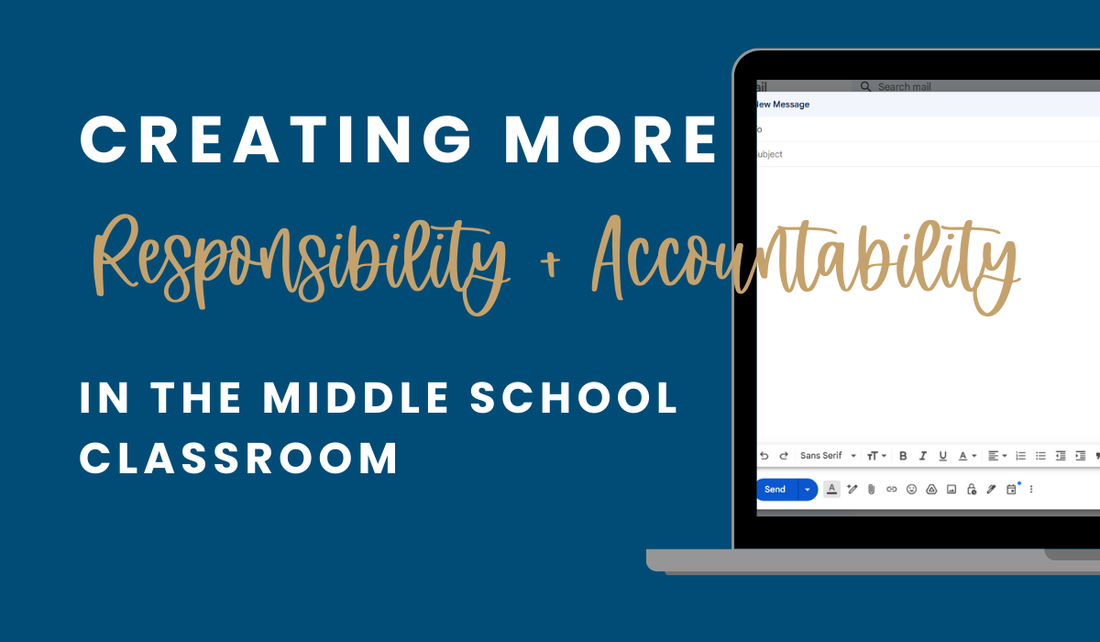I have worked with middle schoolers for six years now and have taught sixth grade in a self-contained setting for three of those years. From that experience, I saw that sixth grade is the perfect time to begin introducing more responsibility and accountability, especially as they begin to transition into middle school.
Rhythms of a Weekly Routine
As soon as I get my schedule in August, I begin setting up our weekly routine. While there are days I wish I was a content area teacher, there are a handful of pros to being a self-contained teacher. For example, I have more flexibility in how I set up our day/week that works for us.
Here is a quick breakdown of how I handle missing/late work and grade checks throughout our week:
-
Monday: print first copy of missing list
-
Wednesday: students get second (updated) copy and have a focused study hall, WIN (What I Need) Time
-
Thursday: students check grades and send grade report email and missing work list to their parents (and BCC me)
-
Friday: students get a final copy of missing work list
Teach the Email Process
There were two parts to this process, which took the longest. You will need to check ahead of time to make sure students have accounts with the school platform to check their grades (and if not, how to create the accounts).
Part 1 - Checking Grades
This part took us the longest. We ran into a handful of technical difficulties setting up student accounts. I showed students how to set up an account with the school platform and check their grades.
Part 2 - Teaching the Email Process
My school uses Google Suite. I showed my students how to find their inbox and to compose an email.
We practiced:
-
Typing parents’ emails into the “To” box
-
Finding “BCC” and adding my email address (I had to give my students many reminders to slow down and make sure they were typing the email address correctly).
-
Writing a subject
-
Beginning a letter
-
The body of the letter (using the template)
-
Closure
My students take awhile to complete tasks, so I’ve been setting a time limit on how long they have to check grades, write, and send their emails. Our homeroom time is 25 minutes before lunch, so they must complete it before then. If it is not completed and checked off by me, they stay behind at lunch until it gets done. This counts for 5 participation points of their homeroom grade each week.
Students must include a list of their grades for each classes, any missing assignments, a highlight from the week, and a goal they will work toward the next week. The expectation is that they BCC me on this email so it serves as a weekly communication trail where all parties (students, parents, and teacher) are involved. If students are in danger of failing, they are the ones that are responsible for communicating their grades and missing work to their parents. I make it clear at the beginning of the year that parents are expected to read their child’s email (and highly encouraged to respond). I also make it clear to them that I respond on that email thread to keep students in the loop, especially if I have any concerns and want to continue the conversation with parents or provide additional information that is necessary. This way, a parent cannot come to me at the end of the quarter to say “I was not informed”; as they are informed weekly of their child’s progress.
This is also a great connection to writing and grammar. Students practice real-world skills of writing an email and including proper capitalization (proper nouns) and punctuation!
Benefits and Tips for Success
I have found this to be a helpful tool in both communication with parents and leading my students toward more responsibility with their grades and keeping up with work. Parents will hear directly from their child each week, and it gives me the opportunity to respond and add more detail to the student’s email. It also allows us to continue the conversation with the student. There have also been fewer inquiries about grades from parents since these weekly updates are consistent. This method encourages responsibility and self-monitoring within students (many of my students now check their grades on their own throughout the week). They also learn how to identify challenges and create actionable plans.
-
Keep the process consistent to build student habits. We did a lot of practicing in Quarter 1 with grade checks and writing the emails. The email writing process went more quickly in Quarters 2-4 and students felt more confident.
-
Use WIN time strategically to support students struggling with missing work. I listed a handful of strategies to support students during WIN time. If a handful of students have the same missing assignment, you could work with them in a small group, or give them a checklist of assignments in the order they need to be completed (this helps with decision fatigue if they have a long missing work list).
-
Encourage positive feedback from parents to motivate students. I encouraged parents to respond to their child’s email at the beginning of the year with encouragement and any positive feedback they can give before suggestions for fixing low grades.
If you have any questions, feel free to send me an email at lauren@thebackupteacher.com. I would love to hear how you are using this method in your classroom!

